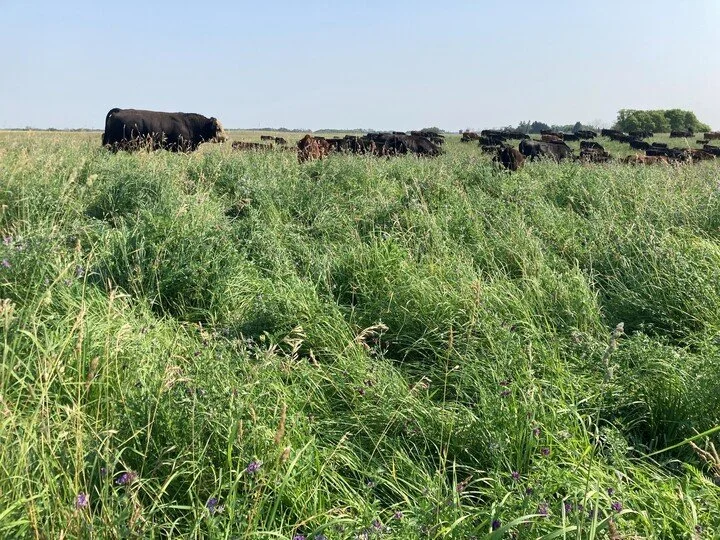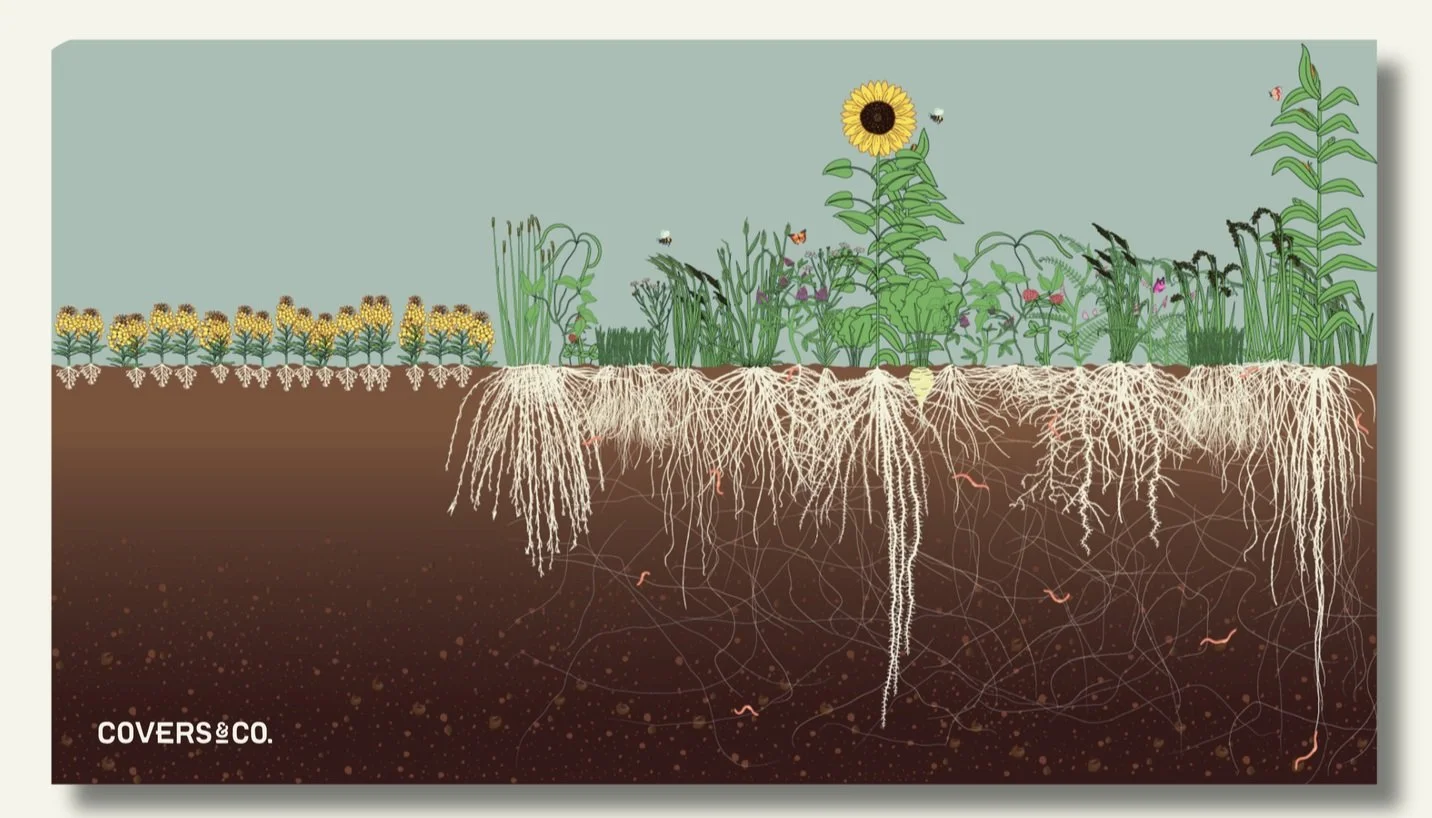Farm Profitability in Kendal, SK
Written by: Ashley Scarfe, Grasslands News
Although winter is only halfway through, local area producers are already gearing up for the 2025 growing season. On January 22, a group gathered in Kendal to discuss plant diversity and farm profitability.
"We are a plant diversity company," says Dakota Odgers, Covers & Co. Southern Saskatchewan Territory Manager. "We are trying to maximize the 96 percent of what plants are made of; carbon, oxygen, and hydrogen."
Odgers was in attendance to meet with area farmers in Kendal to discuss the implementation of soil health principles to reduce input costs and improve soil resiliency. Odgers says the consensus within the farming community is that rising input costs are hampering production. He says by looking to Mother Nature, farmers may be able to mitigate some of those rising costs.
"The big thing about soil health is putting those benefits back into your soil." Odgers says. "We talk about things like proper water infiltration, soil aggregation, reduction of compaction, utilization of nutrients and really getting that soil to function and work together, and to form those relationships beneath the soil to feed those crops."
Odgers says Covers & Co. looks to nature's solutions when it comes to generating productive soil. He says producers should follow the Six Principles of Soil Health as a guideline to increasing the health of their crops. Soil armour through the use of cover crops, animal integration through grazing and conversion of high-carbon annual crop residue to low-carbon organic material, and diversity through a mix of plants to improve pH levels in the soil are the first three principles. Minimizing soil and chemical disturbance, utilizing a living root system, and knowing the context of the conditions your soil should be in are the last three principles.
Odgers says the producers that came to the meeting in Kendal were a healthy mix of those who already utilized these principles in their farming practices and those who were interested in learning more to get started.
"The one thing we talked about was finding ways in our operations to get animals integrated," Odgers says. "Finding simple tools that we can be able to take animals and the nutrients they are carrying with them, back onto the landscape and put those nutrients back into our soil. We also had conversations regarding the utilization of marginal acres and just being able to utilize those efficiently on our farm. Finding plants that will thrive in those environments and gain productivity on our farms."
Odgers says he attends around 15 to 20 similar producer meetings annually.
“I think the main takeaway for me was how awesome it was to see producers after the meeting stick around, engage in conversation, ask questions and just generally want to learn more," Odgers says.
Beyond attending meetings, Odgers also leads on-farm research analyzing Full Season Cover crops in Western Canada. Six sites were chosen for the economic analysis program this past summer. Although analysis is still under way, Odgers has so far released the findings on three of the sites.
Figure: Monoculture vs. Multi-species Environment.
"For me, the one thing that has really shined is the economic benefit of being able to utilize fall grazing and being able to get our livestock back on the land in that fall," Odgers says. "Because there were all those different species still living in the soil, they actually grew back in the fall and then once it grew back, the producers were able to put those animals back on the land."
Odgers says it's about variation when it comes to plant diversity and farm profitability. While many crops have become monocultural in the environment, feeding off the same moisture, nutrients, and sunlight, a multi-species environment is the way to move forward. A symbiotic relationship between organisms both above and below the soil.
"We're just trying to build off Mother Nature's principles with the plant diversity between the warm season and cool season," Odgers says. "Being able to work with Mother Nature and try to find on-farm solutions to help make farms more profitable. That's our main goal.”



